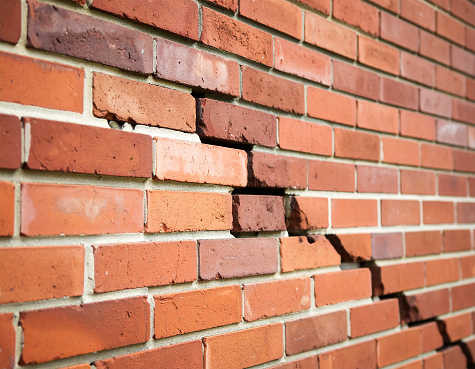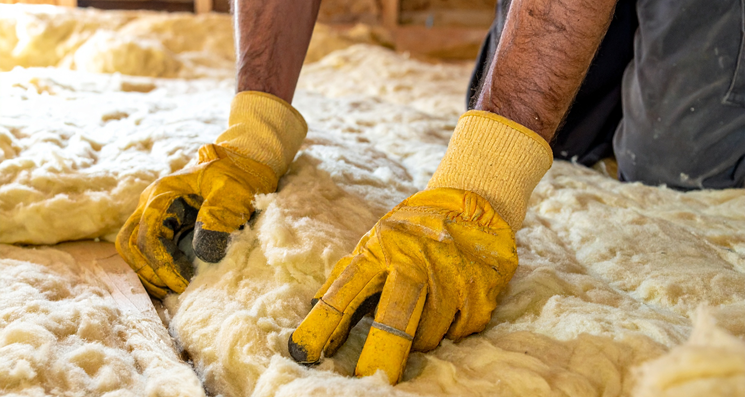What a record dry spring could mean for your property
We’ve just experienced one of the driest spring seasons on record in the UK. According to the Met Office, by mid-May only 80.6mm of rainfall had been recorded across the UK – well below the previous record low of 100.7mm set in 1852. With such little rainfall and no significant change in sight, this spring is on track to become the driest on record. While the sunshine may be very welcome, these prolonged dry conditions pose a serious risk of increased ground movement beneath buildings, especially in areas with clay-rich soils. So, what does this mean for homeowners and property managers? Let’s take a closer look.
What is subsidence and why does it matter?
Subsidence happens when the ground beneath a building sinks, causing the structure to shift or settle unevenly. This can be a serious problem because it affects the very foundation of your home or property. If ignored, subsidence can lead to cracks in walls, uneven floors, and even major structural damage, making your property less safe and significantly lowering its value.
The good news is that subsidence often reveals early warning signs, like cracks around doors and windows or doors that suddenly start sticking. By spotting these signs in good time and taking action, you can prevent the problem from getting worse. This not only protects your property but can also save you money in repair costs.
Why subsidence occurs
The causes of subsidence generally fall into two categories: environmental and property related.
1. Environmental causes
- Clay soil shrinkage: Clay expands when wet and contracts when dry, leading to ground movement that can destabilise foundations.
- Trees and shrubs: Large or mature vegetation near a property can extract moisture from the soil, especially clay, causing it to shrink.
- Water leaks: Broken pipes or faulty drainage can erode soil, making it unstable.
- Climate conditions: Areas prone to drought or flooding face higher subsidence risks due to extreme soil moisture changes.
- Soil type: Clay-heavy soils, particularly in southern and eastern England, are more susceptible to subsidence.
2. Property-related causes
- Age of the property: Older buildings may have shallow or less robust foundations, making them more vulnerable.
- Poor groundworks: Inadequate preparation of the building site, such as using the wrong fill material or failing to compact it properly, can lead to future subsidence.
Spotting the signs of subsidence
Spotting the signs of subsidence early is essential because it helps prevent more serious structural damage to your property. When caught in its early stages, subsidence can often be managed with less invasive and less costly repairs, avoiding the need for major interventions like underpinning. Early detection also helps preserve the value of your home, as visible damage can significantly reduce its market appeal.
From a safety perspective, tackling subsidence promptly ensures the building remains secure for its occupants. Additionally, reporting the issue early can simplify the insurance claims process, making it easier to access the support and coverage you may need.
What to look out for:
- Cracks in walls, especially around doors, windows, or where extensions join the main structure
- Doors and windows that stick or no longer fit properly
- Wallpaper that creases or wrinkles unexpectedly.
Cracks caused by subsidence often have distinct characteristics that set them apart from other types of structural movement. They are typically wider than 3mm (thicker than a 10p coin) and tend to appear in a diagonal pattern, usually wider at the top than at the bottom. These cracks are often visible both inside and outside the property, commonly forming near doors and windows where structural stress is more pronounced. In more advanced cases, the cracks may even extend below the damp-proof course, which is the waterproof barrier installed near ground level to prevent rising damp.
Contact your insurer or broker immediately if you suspect subsidence
As soon as you notice signs of subsidence, get in touch with your insurer or insurance broker. They’ll guide you through the initial steps and let you know what information or evidence they need. Acting quickly can help prevent further damage and ensure your claim is handled efficiently.
Confirm subsidence is the culprit
Your insurer may arrange for a specialist, such as a structural engineer or surveyor, to visit your property. Their job is to assess the extent of the damage and determine whether subsidence is the cause. This inspection is crucial for confirming the diagnosis and deciding on the appropriate repair strategy.
Review your insurance policy
Take a close look at your buildings insurance policy to understand:
- What’s covered: Most standard policies cover subsidence, but it’s important to check the details.
- Your excess: This is the amount you’ll need to pay out of pocket before your insurer covers the rest. Subsidence claims often have a higher excess than other types of claims.
- Any exclusions or conditions: For example, some policies may not cover damage caused by trees if they were planted too close to the property.
Contact us
If you’d like to get in touch to discuss subsidence risk and your buildings insurance, please visit our property page or email: enquiries@thecleargroup.com







